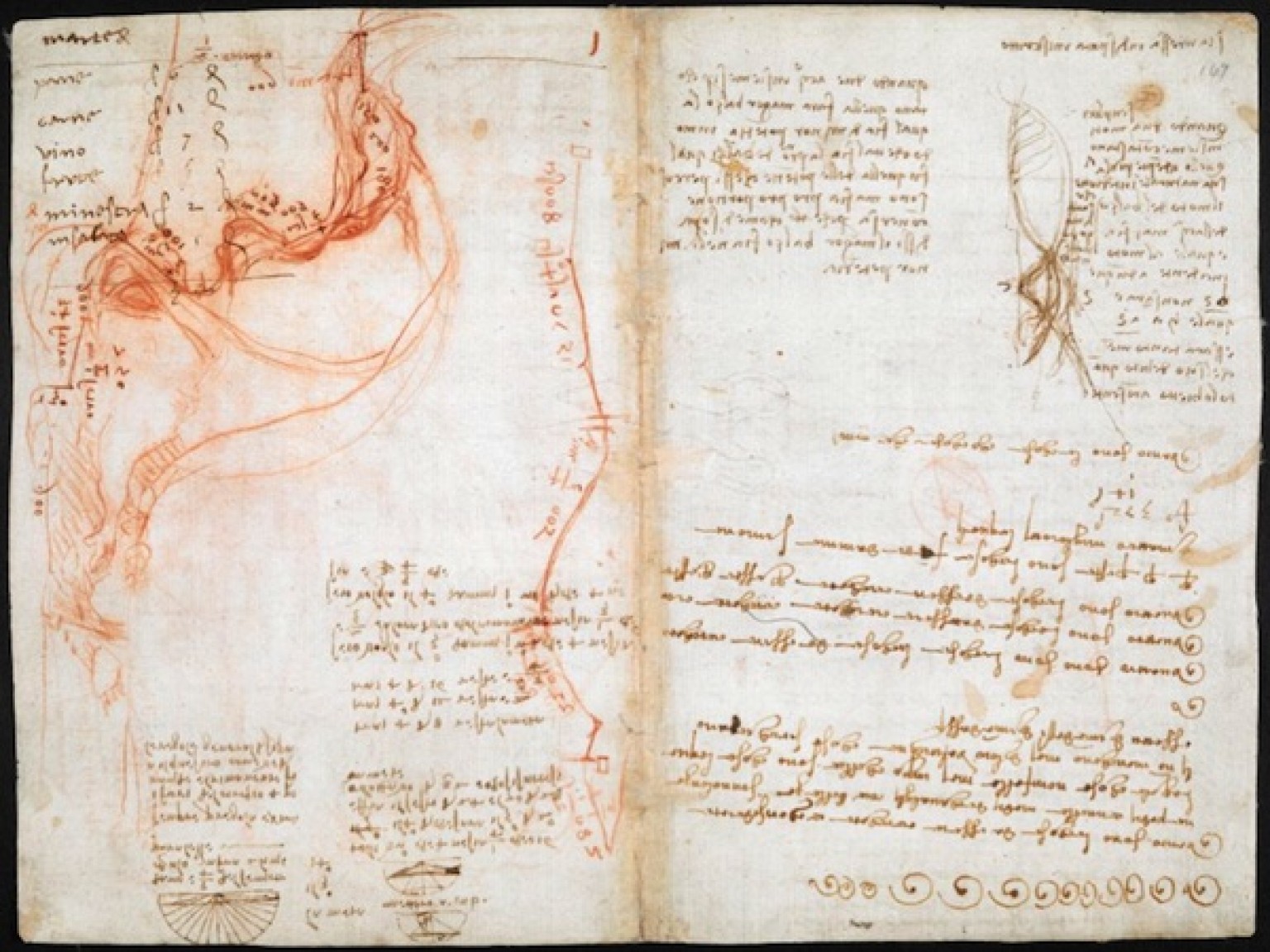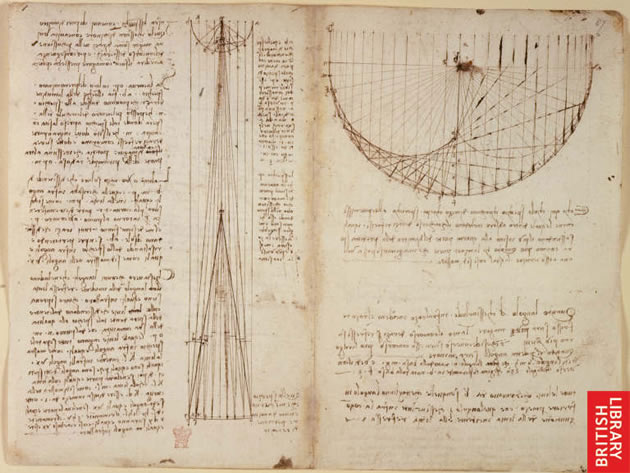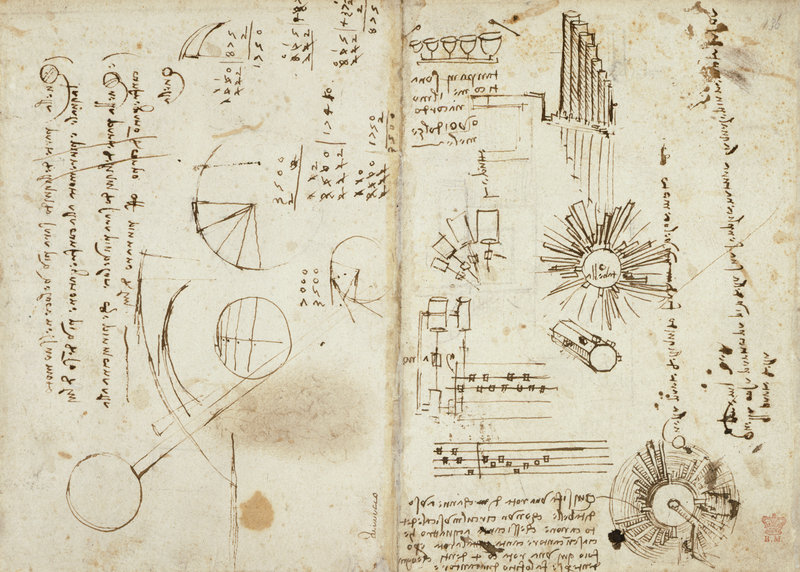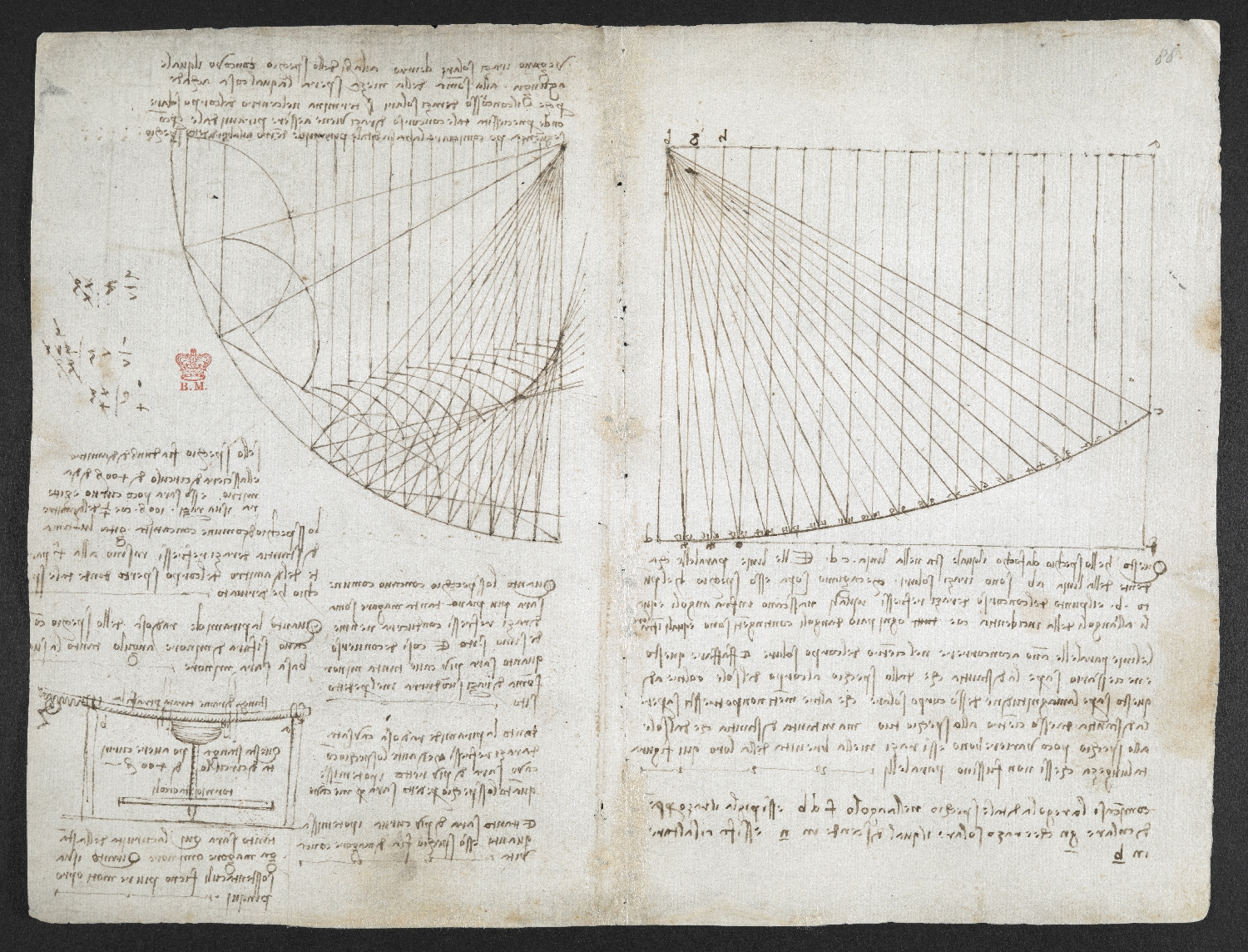[Most Recent Entries] [Calendar View]
Tuesday, July 25th, 2017
| Time | Event |
| 8:00a | H.R. Giger’s Tarot Cards: The Swiss Artist, Famous for His Design Work on Alien, Takes a Journey into the Occult 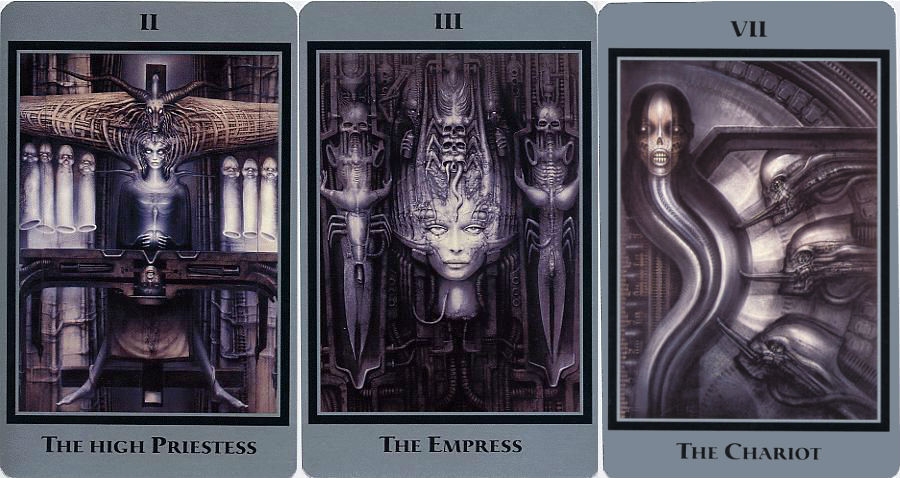 The first tarot cards appeared in Europe in the mid-fifteenth century, and those who used them used to play simple card games. But as the art of the tarot deck developed to incorporate a host of historical, philosophical, and astronomical symbols, their imagery took on more weight, and a couple hundred years later the cards had become popular instruments of divination. From the late eighteenth century on, one could obtain tarot decks specifically designed for occult purposes, and their artistic variety has only expanded in the 250 or so years since. In the 1990s, the imaginative world of tarot collided with an equally rich set of visions: those of H.R. Giger. Giger, a Swiss artist who first gained worldwide fame and influence with his design work on Ridley Scott's Alien (up to and including the terrifying alien itself), united the biological and the mechanical in a distinctive and disturbing fashion. After seeing Giger's art in his first book of paintings Necronomicon, a Swiss occultist by the name of Akron understood its potential as tarot imagery. The collection's title picture, Akron writes, showed a "fascinating monster" called Baphomet, "the symbol of the connection between the rational and irrational world," the same function performed by the occult tarot deck itself. When Akron approached Giger proposing to collaborate on a deck, according to i09's Lauren Davis, "Giger felt that he didn't have the time to create new works that would do the deck justice. So he selected 22 of his existing, previously unpublished pieces" for the cards' faces. In a later interview, "Giger says that he never studied Tarot cards and in fact, had no interest in having his fortune told with them. (Giger claimed he was too superstitious, though he describes Akron's descriptions of the individual cards as 'sometimes crazy, but funny — but not probably very serious.')" His "mix of occult iconography, demonic organisms, and his trademark biomechanical aesthetic make for apt, if unusually dark Tarot illustrations." You can see more of Giger and Akron's tarot deck, available in both English and German, at i09 and Dangerous Minds. Or better yet, pick up your own deck of cards. While browsing, do keep in mind two things: first, that Giger's visions, even those selected to represent age-old tarot arcana, can certainly get NSFW. Second, even though the artist specialized in nightmarish imagery (hence his popularity on the grimmer side of science fiction) we should resist interpreting them too literally as representations of the future. After all, the cards, as a much more lighthearted production once joked, are vague and mysterious. Related Content: The Tarot Card Deck Designed by Salvador Dalí Twin Peaks Tarot Cards Now Available as 78-Card Deck Alejandro Jodorowsky Explains How Tarot Cards Can Give You Creative Inspiration Based in Seoul, Colin Marshall writes and broadcasts on cities and culture. He’s at work on the book The Stateless City: a Walk through 21st-Century Los Angeles, the video series The City in Cinema, the crowdfunded journalism project Where Is the City of the Future?, and the Los Angeles Review of Books’ Korea Blog. Follow him on Twitter at @colinmarshall or on Facebook. H.R. Giger’s Tarot Cards: The Swiss Artist, Famous for His Design Work on Alien, Takes a Journey into the Occult is a post from: Open Culture. Follow us on Facebook, Twitter, and Google Plus, or get our Daily Email. And don't miss our big collections of Free Online Courses, Free Online Movies, Free eBooks, Free Audio Books, Free Foreign Language Lessons, and MOOCs. |
| 4:57p | The British Museum Creates 3D Models of the Rosetta Stone & 200+ Other Historic Artifacts: Download or View in Virtual Reality
A quick fyi: Back in 2015, The British Museum gave the world online access to the Rosetta Stone, along with 4,700 other artifacts in the great London museum. But that access was only in 2D. Now they've upped the ante and published a 3D model of the Rosetta Stone and 200+ other essential items in the museum's collections. "This scan was part of our larger attempt to capture as many of our iconic pieces from the collection — and indeed the unseen in store objects — and make them available for people to view in 3D or in more tactile forms,” Daniel Pett, a British Museum adviser told Digital Trends. Other 3D models you might want to check out include the granite head of Amenemhat III, a portrait bust of Sir Robert Bruce Cotton, and a statue of Roy, High Priest of Amun. Note: If you put your mouse on the objects and swivel on your trackpad, you can see different sides of the artifacts. Created with a company called Sketchfab, the 3D models are all available to download. You can also see them in virtual reality. (Look for the little "View in VR" icon at the bottom of each image.) Follow Open Culture on Facebook and Twitter and share intelligent media with your friends. Or better yet, sign up for our daily email and get a daily dose of Open Culture in your inbox. If you'd like to support Open Culture and our mission, please consider making a donation to our site. It's hard to rely 100% on ads, and your contributions will help us provide the best free cultural and educational materials. Related Content: 1.8 Million Free Works of Art from World-Class Museums: A Meta List of Great Art Available Online The British Museum Creates 3D Models of the Rosetta Stone & 200+ Other Historic Artifacts: Download or View in Virtual Reality is a post from: Open Culture. Follow us on Facebook, Twitter, and Google Plus, or get our Daily Email. And don't miss our big collections of Free Online Courses, Free Online Movies, Free eBooks, Free Audio Books, Free Foreign Language Lessons, and MOOCs. |
| 8:00p | Hear the 150 Greatest Albums by Women: NPR Creates a New Canon of Albums That Puts Women at the Center of Music History What is it with all the trendpieces on great women artists, writers, directors, singers, etc.? What, indeed. To ask the question is to acknowledge the premise of such pieces. Why should they need to be written at all if women in these fields received fair representation elsewhere? That lists and articles can be written in the hundreds puts the lie to phony claims that "great" women do not exist in every field in numbers. This is especially true in the 20th century, when hard-won political gains opened cultural doors unimaginable to many previous generations. But those gains did not fundamentally alter how cultural histories have been written. Music critic Anne Powers and Lincoln Center program director Jill Sternheimer recently considered this problem, one which, Powers writes at NPR, persists even in the ways “music history’s being recorded and revised in the digital age.” They wondered, "why... was the importance of women so often recognized as a trend instead of a source of lasting impact? We came to a conclusion that, in 2017, will likely strike no one as a surprise: that the general history of popular music is told through the great works of men, and that without a serious revision of the canon, women will always remain on the margins.”
This isn’t a problem of “representation”—the term we so often hear applied to casting decisions and awards shows. Powers isn’t making a case for diversity in hiring, but for accuracy in writing the historical record. To that end, Powers and Lincoln Center, together with “nearly 50 women who play a role in NPR… compiled and voted” on a list: "Turning the Tables: The 150 Greatest Albums by Women.” You can hear nearly all of those albums in our Spotify playlist below. Calling the list “an intervention, a remedy, a correction,” Powers writes, “These albums were released between 1964, the year The Beatles invaded America… and 2016, when Beyoncé arguably ushered in a new period with her ‘visual album’ Lemonade.”
Against the argument for “affirmative action”—or simply rewriting old “great album” lists to include more women—Powers argues, “once a canon is formed, it gains an aura of immutability.” Plenty of lists include female artists. Almost none of them include women in the top spots, suggesting that “the paradigms that define greatness remain masculine at their core.” Tokenism, no matter how well-intentioned, does not make for “a shift in perspective beyond the simple mandate to adjust the numbers.” Ava Duvernay has made a similar argument against mandated “diversity” in Hollywood as a mollifying tactic that maintains status quo power relationships. “The fact that the mainstream starts to gaze at this space doesn’t make it a moment,” she tells Hollywood Reporter, “it makes it a moment for them.” As Powers writes of the way Joni Mitchell was often treated by the rock establishment, "the female musician is a dream, a surprise and a disruptor. She can claim the center of attention, but her rightful point of origin, and the place to which she returns, is a margin." [Error: Irreparable invalid markup ('<div [...] http://cdn8.openculture.com/>') in entry. Owner must fix manually. Raw contents below.] <div class="oc-video-wrapper">
<div class="oc-video-container">
<p><a href="http://www.youtube.com/watch?v=0YuaZcylk_o"><img src="http://img.youtube.com/vi/0YuaZcylk_o/default.jpg" border="0" width="320" /></a></p>
</div>
<p> <!-- /oc-video-embed -->
</p></div>
<p><!-- /oc-video-wrapper --></p>
<p>What is it with all the trendpieces on great women artists, writers, directors, singers, etc.? What, indeed. To ask the question is to acknowledge the premise of such pieces. Why should they need to be written at all if women in these fields received fair representation elsewhere? That lists and articles can be written in the hundreds puts the lie to phony claims that "great" women do not exist in every field in numbers. This is especially true in the 20th century, when hard-won political gains opened cultural doors unimaginable to many previous generations. But those gains did not fundamentally alter how cultural histories have been written.</p>
<p>Music critic Anne Powers and Lincoln Center program director Jill Sternheimer recently considered this problem, one which, <a href="http://www.npr.org/2017/07/24/538601651/a-new-canon-in-pop-music-women-belong-at-the-center-of-the-story">Powers writes at NPR</a>, persists even in the ways “music history’s being recorded and revised in the digital age.”</p>
<div class="oc-center white_background noexpand">
</div>
<p>They wondered, "why... was the importance of women so often recognized as a trend instead of a source of lasting impact? We came to a conclusion that, in 2017, will likely strike no one as a surprise: that the general history of popular music is told through the great works of men, and that without a serious revision of the canon, women will always remain on the margins.”</p>
<blockquote><p><em>This is a truth reinforced in many different ways: by the shelves weighed down with books about Jimi Hendrix and Nirvana, while only one or two about Aretha Franklin or Patti Smith sit nearby; by the radio playlists that still only feature women once or twice every hour.</em></p></blockquote>
<p>This isn’t a problem of “representation”—the term we so often hear applied to casting decisions and awards shows. Powers isn’t making a case for diversity in hiring, but for accuracy in writing the historical record. To that end, Powers and Lincoln Center, together with “nearly 50 women who play a role in NPR… compiled and voted” on a list: "<a href="http://www.npr.org/2017/07/24/538387823/turning-the-tables-150-greatest-albums-made-by-women">Turning the Tables: The 150 Greatest Albums by Women</a>.” You can hear nearly all of those albums in our Spotify playlist below. Calling <a href="http://www.npr.org/2017/07/24/538387823/turning-the-tables-150-greatest-albums-made-by-women">the list </a>“an intervention, a remedy, a correction,” Powers writes, “These albums were released between 1964, the year The Beatles invaded America… and 2016, when Beyoncé arguably ushered in a new period with her ‘visual album’ <em>Lemonade</em>.”</p>
<blockquote><p><em>The point is to offer a view of popular music history with women's work at the center. The list does not represent an "alternate history." It stands for music history, touching upon every significant trend, social issue, set of sonic innovations, and new avenue for self-expression that popular music has intersected in the past fifty years.</em></p></blockquote>
<p>Against the argument for “affirmative action”—or simply rewriting old “great album” lists to include more women—Powers argues, “once a canon is formed, it gains an aura of immutability.” Plenty of lists include female artists. Almost none of them include women in the top spots, suggesting that “the paradigms that define greatness remain masculine at their core.” Tokenism, no matter how well-intentioned, does not make for “a shift in perspective beyond the simple mandate to adjust the numbers.”</p>
<p>Ava Duvernay has made a <a href="http://www.hollywoodreporter.com/features/oprah-winfrey-ava-duvernay-black-920196">similar argument</a> against mandated “diversity” in Hollywood as a mollifying tactic that maintains status quo power relationships. “The fact that the mainstream starts to gaze at this space doesn’t make it a moment,” she tells <em>Hollywood Reporter</em>, “it makes it a moment for <em>them</em>.” As Powers writes of the way Joni Mitchell was often treated by the rock establishment, "the female musician is a dream, a surprise and a disruptor. She can claim the center of attention, but her rightful point of origin, and the place to which she returns, is a margin."</p>
<div class="oc-center" http://cdn8.openculture.com/="http://cdn8.openculture.com/">
<p>Instead of marginal inclusion in existing cliques, Powers argues for a cultural shift, a “new canon,” that isn’t hedged with the usual standards that often exclude women on arbitrary purist grounds. Keeping “wide parameters,” the contributors “left room for acknowledged rock-era classics as well as pop hits dismissed by others as fluff.” That disclaimer aside, there’s precious little “fluff” on <a href="http://www.npr.org/2017/07/24/538387823/turning-the-tables-150-greatest-albums-made-by-women">this list</a>—meaning it’s hard to find albums here that wouldn’t qualify for “greatest” status on more narrowly-defined genre lists. It is a list, that is to say, of <a href="http://www.npr.org/2017/07/24/538387823/turning-the-tables-150-greatest-albums-made-by-women">150 great albums</a>, written, recorded, and released over the course of fifty plus years, by some of the most talented writers, players, and musicians in modern music history.</p>
<p>"Lists have their limitations," Powers admits, "They reflect biases and whispered compromises." She and her contributors offer this one "as the beginning of a new conversation" rather than an authoritative statement. At such depth and breadth, however, "Turning the Tables" makes room for nearly every possible genre, from all over the world. Read the <a href="http://www.npr.org/2017/07/20/538307314/turning-the-tables-150-greatest-albums-made-by-women-page-15">full list of 150 albums, with commentary, here</a>. A few of the 150 albums, including <em>Lemonade</em>, Bikini Kill's <em>Yeah Yeah Yeah</em>, Joan Jett's <em>I Love Rock 'n' Roll</em>, Joanna Newsome's <em>Ys</em>, and Laurie Anderson's <em>Big Science</em> aren't on Spotify, so didn't make our playlist above. The top ten albums on the list are:</p>
<ol><li>Joni Mitchell, <a href="http://amzn.to/2usSoMW"><em>Blue</em></a> (Reprise, 1971)</li>
<li>Lauryn Hill, <a href="http://amzn.to/2eJZJlW"><em>The Miseducation of Lauryn Hill</em> </a>(Ruffhouse/Columbia, 1998)</li>
<li>Nina Simone, <a href="http://amzn.to/2eJAjVG"><em>I Put a Spell on You</em></a> (Philips, 1956)</li>
<li>Aretha Franklin,<a href="http://amzn.to/2tVRo0a"> <em>I Never Loved a Man the Way I Loved You</em></a> (Atlantic, 1967)</li>
<li>Missy Eliot, <a href="http://amzn.to/2eKe9SX"><em>Supa Dupa Fly</em></a> (The Goldmine/Elekra, 1997)</li>
<li>Beyoncé, <a href="http://amzn.to/2uvHc0i"><em>Lemonade</em></a> (Parkwood/Columbia 2016)</li>
<li>Patti Smith, <a href="http://amzn.to/2gYZKTF"><em>Horses</em></a> (Arista, 1975)</li>
<li>Janis Joplin, <a href="http://amzn.to/2eJtzHg"><em>Pearl</em></a> (Columbia, 1971)</li>
<li>Amy Winehouse, <a href="http://amzn.to/2uvpFpg"><em>Back to Black</em></a> (Island, 2006)</li>
<li>Carole King, <a href="http://amzn.to/2ussLM8"><em>Tapestry</em></a> (Ode, 1971)</li>
</ol><p><strong>Related Content:</strong></p>
<p><a href="http://www.openculture.com/2015/06/hear-seven-hours-of-women-making-electronic-music-1938-2014.html">Hear Seven Hours of Women Making Electronic Music (1938-2014)</a></p>
<p><a href="http://www.openculture.com/2015/10/1200-years-of-women-composers-a-free-78-hour-music-playlist.html">1200 Years of Women Composers: A Free 78-Hour Music Playlist That Takes You From Medieval Times to Now</a></p>
<p><a href="http://www.openculture.com/2017/07/women-of-jazz-stream-a-playlist-of-91-recordings-by-great-female-jazz-musicians.html">Women of Jazz: Stream a Playlist of 91 Recordings by Great Female Jazz Musicians</a></p>
<p><a href="http://about.me/jonesjoshua"><em>Josh Jones</em></a><em> is a writer and musician based in Durham, NC. Follow him at <a href="https://twitter.com/jdmagness">@jdmagness</a></em></p>
<!-- permalink:http://www.openculture.com/2017/07/the-150-greatest-albums-by-women.html--><p><a rel="nofollow" href="http://www.openculture.com/2017/07/the-150-greatest-albums-by-women.html">Hear the 150 Greatest Albums by Women: NPR Creates a New Canon of Albums That Puts Women at the Center of Music History</a> is a post from: <a href="http://www.openculture.com">Open Culture</a>. Follow us on <a href="https://www.facebook.com/openculture">Facebook</a>, <a href="https://twitter.com/#!/openculture">Twitter</a>, and <a href="https://plus.google.com/108579751001953501160/posts">Google Plus</a>, or get our <a href="http://www.openculture.com/dailyemail">Daily Email</a>. And don't miss our big collections of <a href="http://www.openculture.com/freeonlinecourses">Free Online Courses</a>, <a href="http://www.openculture.com/freemoviesonline">Free Online Movies</a>, <a href="http://www.openculture.com/free_ebooks">Free eBooks</a>, <a href="http://www.openculture.com/freeaudiobooks">Free Audio Books</a>, <a href="http://www.openculture.com/freelanguagelessons">Free Foreign Language Lessons</a>, and <a href="http://www.openculture.com/free_certificate_courses">MOOCs</a>.</p>
<div class="feedflare">
<a href="http://feeds.feedburner.com/~ff/OpenCulture?a=tb51eryBwFI:5P6xq4LfLbI:yIl2AUoC8zA"><img src="http://feeds.feedburner.com/~ff/OpenCulture?d=yIl2AUoC8zA" border="0"></img></a> <a href="http://feeds.feedburner.com/~ff/OpenCulture?a=tb51eryBwFI:5P6xq4LfLbI:V_sGLiPBpWU"><img src="http://feeds.feedburner.com/~ff/OpenCulture?i=tb51eryBwFI:5P6xq4LfLbI:V_sGLiPBpWU" border="0"></img></a> <a href="http://feeds.feedburner.com/~ff/OpenCulture?a=tb51eryBwFI:5P6xq4LfLbI:gIN9vFwOqvQ"><img src="http://feeds.feedburner.com/~ff/OpenCulture?i=tb51eryBwFI:5P6xq4LfLbI:gIN9vFwOqvQ" border="0"></img></a> <a href="http://feeds.feedburner.com/~ff/OpenCulture?a=tb51eryBwFI:5P6xq4LfLbI:qj6IDK7rITs"><img src="http://feeds.feedburner.com/~ff/OpenCulture?d=qj6IDK7rITs" border="0"></img></a> <a href="http://feeds.feedburner.com/~ff/OpenCulture?a=tb51eryBwFI:5P6xq4LfLbI:I9og5sOYxJI"><img src="http://feeds.feedburner.com/~ff/OpenCulture?d=I9og5sOYxJI" border="0"></img></a>
</div><img src="http://feeds.feedburner.com/~r/OpenCulture/~4/tb51eryBwFI" height="1" width="1" alt="" /> |
| 8:10p | Leonardo da Vinci’s Visionary Notebooks Now Online: Browse 570 Digitized Pages
Quick, what do you know about Leonardo da Vinci? He painted the Mona Lisa! He wrote his notes backwards! He designed supercool bridges and flying machines! He was a genius about, um… a lot of other… things… and, um, stuff... Okay, I’m sure you know a bit more than that, but unless you’re a Renaissance scholar, you’re certain to find yourself amazed and surprised at how much you didn’t know about the quintessential Renaissance man when you encounter a compilation of his notebooks—Codex Arundel—which has been digitized by the British Library and made available to the public. The notebook, writes Jonathan Jones at The Guardian, represents “the living record of a universal mind.” And yet, though a “technophile” himself, “when it came to publication, Leonardo was a luddite…. He made no effort to get his notes published.”
For hundreds of years, the huge, secretive collection of manuscripts remained mostly unseen by all but the most rarified of collectors. After Leonardo's death in France, writes the British Library, his student Francesco Melzi “brought many of his manuscripts and drawings back to Italy. Melzi’s heirs, who had no idea of the importance of the manuscripts, gradually disposed of them.” Nonetheless, over 5,000 pages of notes “still exist in Leonardo’s ‘mirror writing’, from right to left.” In the notebooks, da Vinci drew “visions of the aeroplane, the helicopter, the parachute, the submarine and the car. It was more than 300 years before many of his ideas were improved upon.”
The digitized notebooks debuted in 2007 as a joint project of the British Library and Microsoft called “Turning the Pages 2.0,” an interactive feature that allows viewers to “turn” the pages of the notebooks with animations. Onscreen glosses explain the content of the cryptic notes surrounding the many technical drawings, diagrams, and schematics (see a selection of the notebooks in this animated format here). For an overwhelming amount of Leonardo, you can look through 570 digitized pages of Codex Arundel here. For a slightly more digestible, and readable, amount of Leonardo, see the British Library’s brief series on his life and work, including explanations of his diving apparatus, parachute, and glider.
And for much more on the man—including evidence of his sartorial “preference for pink tights” and his shopping lists—see Jonathan Jones’ Guardian piece, which links to other notebook collections and resources. The artist and self-taught polymath made an impressive effort to keep his ideas from prying eyes. Now, thanks to digitized collections like those at the British Library, “anyone can study the mind of Leonardo.” Related Content: Leonardo Da Vinci’s To Do List (Circa 1490) Is Much Cooler Than Yours Download the Sublime Anatomy Drawings of Leonardo da Vinci: Available Online, or in a Great iPad App Josh Jones is a writer and musician based in Durham, NC. Follow him at @jdmagness Leonardo da Vinci’s Visionary Notebooks Now Online: Browse 570 Digitized Pages is a post from: Open Culture. Follow us on Facebook, Twitter, and Google Plus, or get our Daily Email. And don't miss our big collections of Free Online Courses, Free Online Movies, Free eBooks, Free Audio Books, Free Foreign Language Lessons, and MOOCs. |
| << Previous Day |
2017/07/25 [Calendar] |
Next Day >> |

